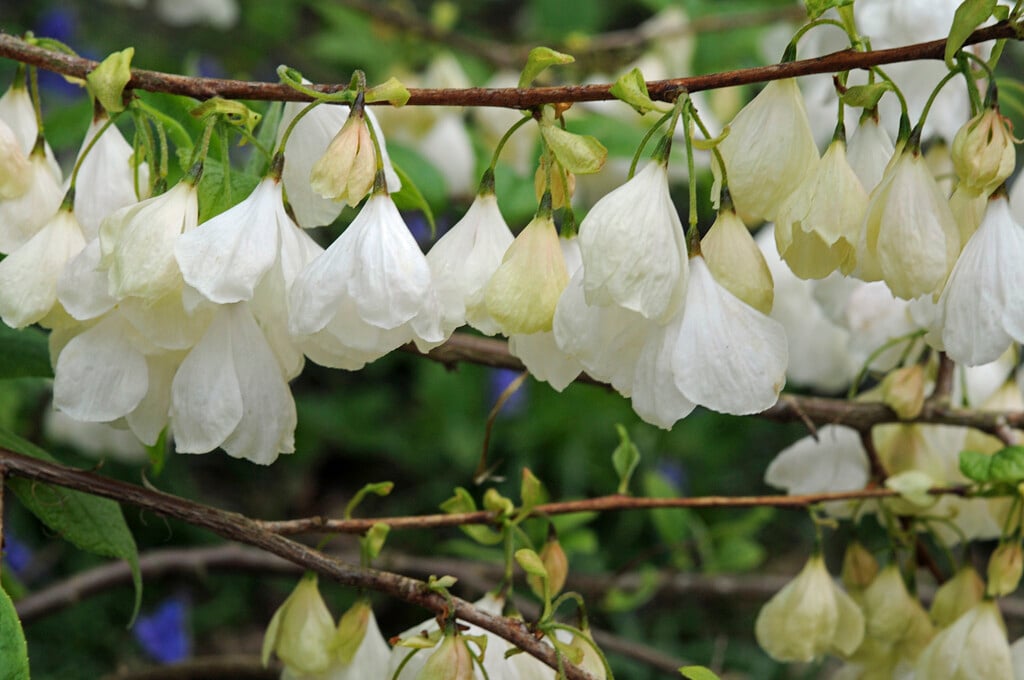Halesia carolina Vestita Group
Carolina silverbell Vestita Group
A fast-growing medium-sized deciduous tree, often broad-crowned, with oval leaves turning yellow in autumn, and hanging, bell-shaped white flowers sometimes tinged pink, followed by 4-winged pale green fruits
Size
Ultimate height
8–12 metresTime to ultimate height
20–50 yearsUltimate spread
4–8 metresGrowing conditions
Moisture
Well–drainedpH
Acid, NeutralColour & scent
| Stem | Flower | Foliage | Fruit | |
| Spring | White | Green | ||
|---|---|---|---|---|
| Summer | Green | |||
| Autumn | Yellow | Green | ||
| Winter |
Position
- Partial shade
Aspect
North–facing or East–facing or South–facing or West–facing
Exposure
Exposed or Sheltered Hardiness
H5Botanical details
- Family
- Styracaceae
- Native to GB / Ireland
- No
- Foliage
- Deciduous
- Habit
- Bushy
- Genus
Halesia are deciduous shrubs or small trees with simple, ovate leaves and pendent, bell-shaped white flowers followed by distinctive, winged fruits
- Name status
Accepted
- Plant range
- E USA
How to grow
Cultivation
Grow in lime-free, moist but well-drained soil in partial shade; suitable for woodlands
Propagation
Propagate by seed or softwood cuttings
Suggested planting locations and garden types
- Architectural
- Low Maintenance
Pruning
Pests
Generally pest-free
Diseases
May be susceptible to honey fungus in gardens where it is present but insufficient data to determine degree of susceptibility
Get involved
The RHS is the UK’s gardening charity, helping people and plants to grow - nurturing a healthier, happier world, one person and one plant at a time.
